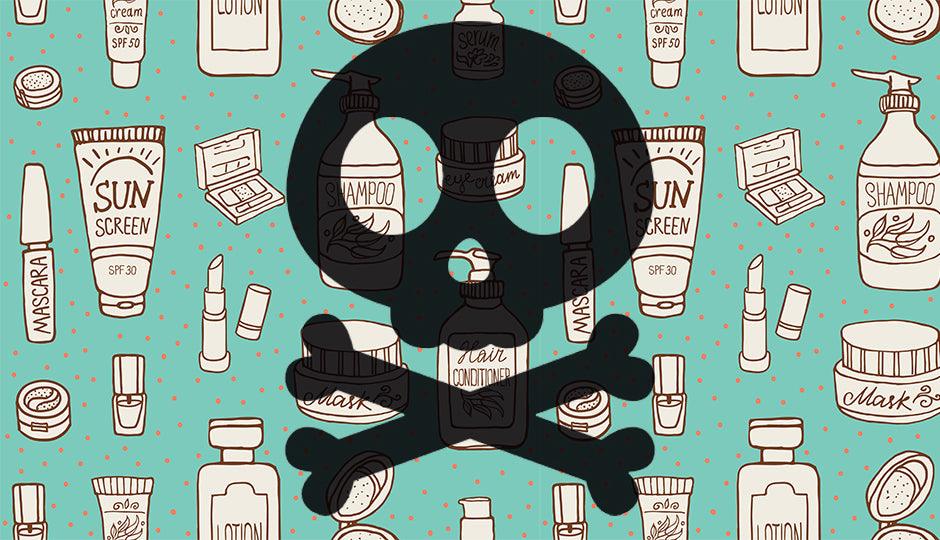
Unveiling the Top 10 Toxic Chemicals in Skincare: Embracing the Superiority of Natural Alternatives
Share

In the pursuit of healthy, radiant skin, it is essential to be mindful of the ingredients we apply to our largest organ. Unfortunately, many skincare products on the market contain toxic chemicals that can have adverse effects on our well-being. In this comprehensive blog post, we will explore the top 10 toxic chemicals commonly found in skincare products. By shedding light on these harmful substances and understanding their potential risks, we can make informed choices to protect our skin and overall health. Moreover, we will delve into the remarkable benefits of natural skincare alternatives, emphasizing their superiority in promoting healthy and glowing skin.
The Toxic Ten: Harmful Chemicals to Avoid in Skincare

-
Parabens: These widely used preservatives can disrupt hormonal balance and have been linked to reproductive issues and cancer.
-
Phthalates: Often found in fragrances and plasticizers, phthalates are potential endocrine disruptors and have been associated with developmental and reproductive toxicity.
-
Formaldehyde: A known carcinogen, formaldehyde and its releasers, such as DMDM hydantoin and imidazolidinyl urea, can cause skin irritation, allergies, and respiratory problems.
-
Sodium Lauryl Sulfate (SLS): This foaming agent can strip the skin of its natural oils, leading to dryness, irritation, and potential disruption of the skin barrier.
-
Synthetic Fragrances: Fragrances often contain undisclosed ingredients, including phthalates, which can cause skin sensitization, allergies, and respiratory issues.
-
Mineral Oil: Derived from petroleum, mineral oil forms a barrier on the skin that can clog pores, potentially leading to acne and other skin concerns.
-
Synthetic Colors: Artificial dyes, such as FD&C colors, can cause skin sensitivities and allergies. Natural colorants, on the other hand, offer safe alternatives.
-
Formaldehyde Releasing Agents: Ingredients like diazolidinyl urea, quaternium-15, and bronopol release formaldehyde over time, posing similar risks as direct formaldehyde exposure.
-
Oxybenzone: Commonly found in chemical sunscreens, oxybenzone is a potential endocrine disruptor and has been linked to coral reef damage.
-
Triclosan: Used in antibacterial products, triclosan may contribute to antibiotic resistance and disrupt the balance of skin microbiota.
The Superiority of Natural Skincare

-
Gentle and Nourishing: Natural skincare products harness the power of plant-based ingredients that are gentle, nourishing, and less likely to cause skin irritation or allergies.
-
Chemical-Free Formulations: By opting for natural skincare, you can avoid the toxic chemicals mentioned above and embrace cleaner, safer alternatives for your skin and overall well-being.
-
Skin Health and Vitality: Natural ingredients, such as botanical oils, herbal extracts, and essential oils, offer a multitude of benefits, including hydration, antioxidant protection, and improved skin texture.
-
Environmental Considerations: Choosing natural skincare supports eco-conscious practices, including sustainable sourcing, cruelty-free formulations, and reducing the environmental impact of chemical pollution.
The realm of skincare is filled with potential hazards posed by toxic chemicals present in many products. By being informed and proactive, we can make empowered choices for our skin's health and overall well-being. The top 10 toxic chemicals mentioned above serve as a starting point to avoid in skincare. Embracing natural skincare alternatives enables us to nourish and protect our skin while promoting a cleaner and more sustainable future.
Make the switch to natural skincare, prioritize ingredient transparency, and revel in the benefits of healthier, radiant skin. Together, we can create a world where toxic chemicals have no place in our skincare routines.